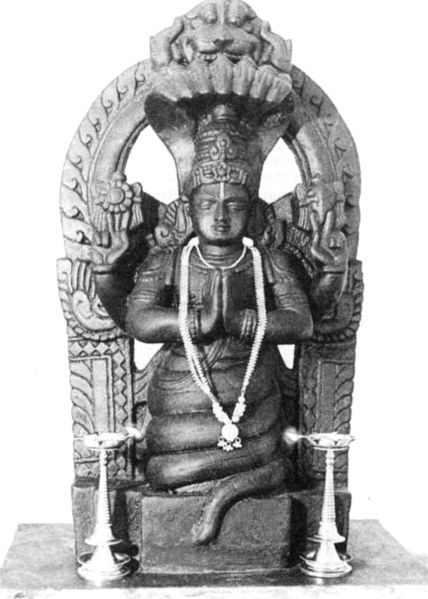In various Asian religious traditions, the Nagas are a divine, or semi-divine, race of half-human, half-serpent beings that reside in the netherworld (Patala), and can occasionally take human or part-human form, or are so depicted in art. A female naga is called a Nagi, or a Nagini. Their descendents are known as Nagavanshi. According to legend, they are the children of the sage Kashyapa and Kadru. Rituals devoted to these supernatural beings have been taking place throughout South Asia for at least 2,000 years. They are principally depicted in three forms: as entirely human with snakes on the heads and necks, as common serpents, or as half-human, half-snake beings in Hinduism, Buddhism, and Jainism.
A Naga couple, featured as a Hoysala relief
Patanjali as Śeṣa.
Mucalinda sheltering Gautama Buddha (Buddha in Naga Prok attitude) at Wat Phra That Doi Suthep in Chiang Mai, Thailand.
Nāga at the steps of a building in the Wat Phra Kaew in Bangkok.
In Indian religions, Patala, denotes the subterranean realms of the universe – which are located under the earthly dimension. Patala is often translated as underworld or netherworld. Patala is described as more beautiful than Svarga. Patala is described as filled with splendid jewels, beautiful groves and lakes.
The legs of the god Vishnu as the purusha depict earth and the six realms of Patala. The feet rest on Shesha.
Nagas are believed to live in the lowest realm of Patala, called Naga-loka.





